site search
online catalog
ORIGINAL WILLIAM W. MARSTON DOUBLE-ACTION BAR HAMMER PEPPERBOX PISTOL
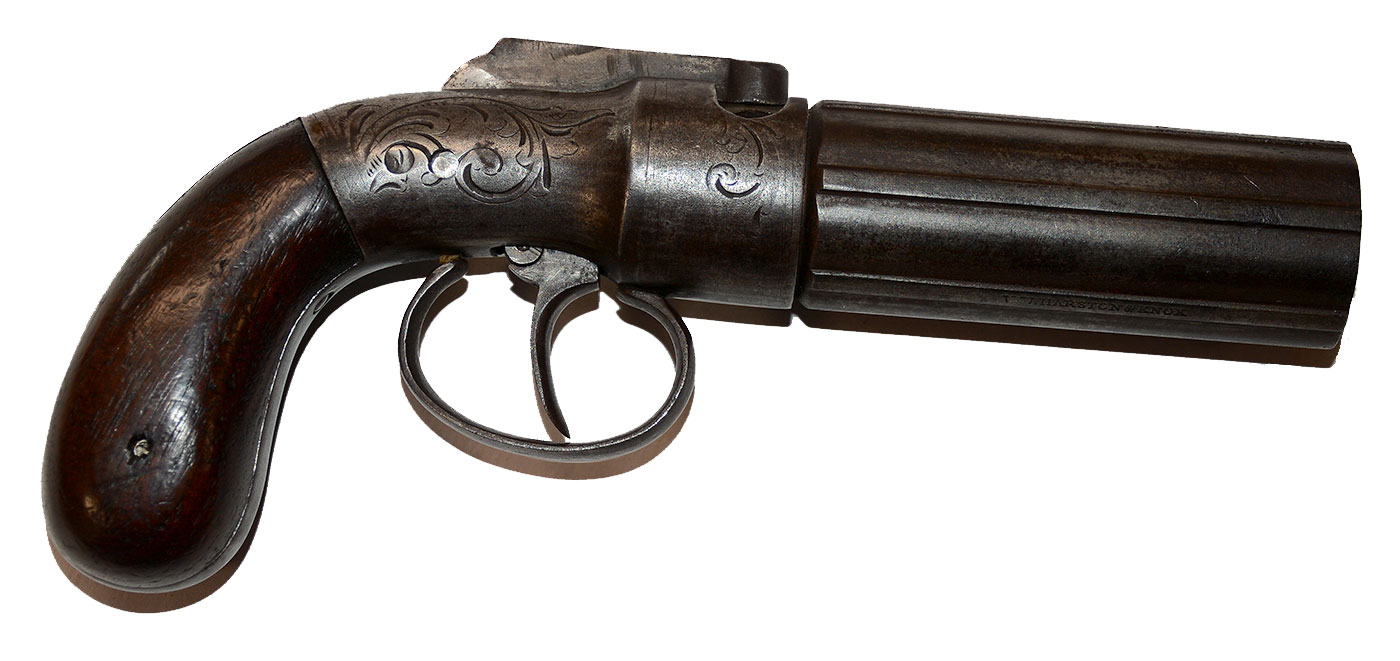
Hover to zoom



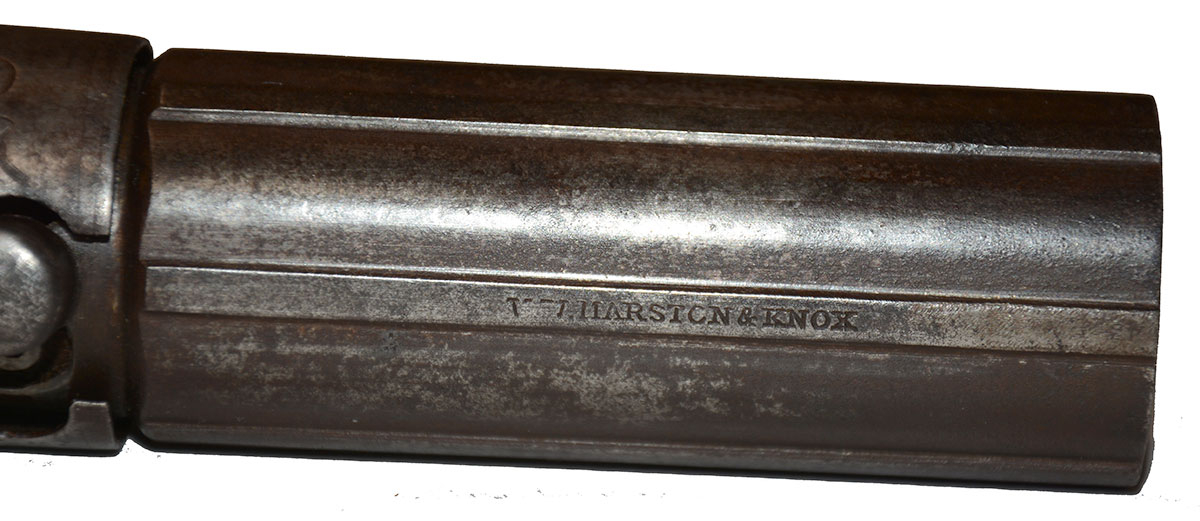
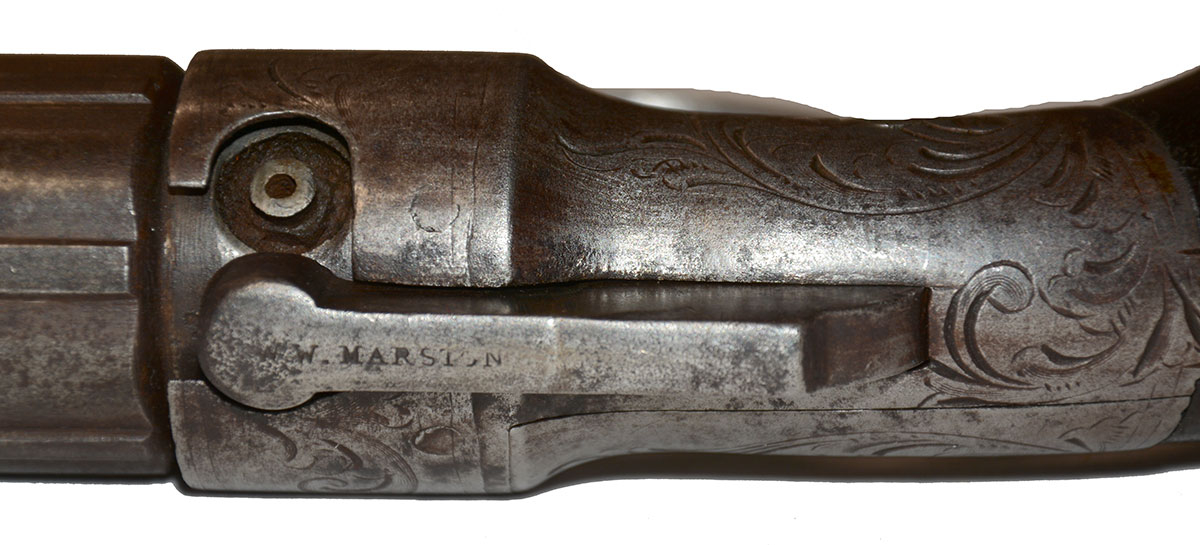
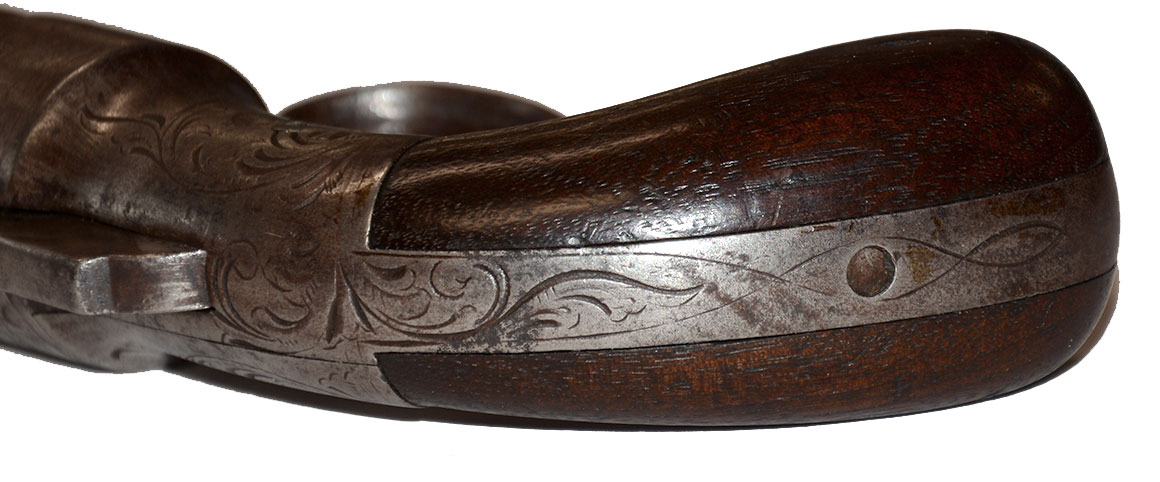
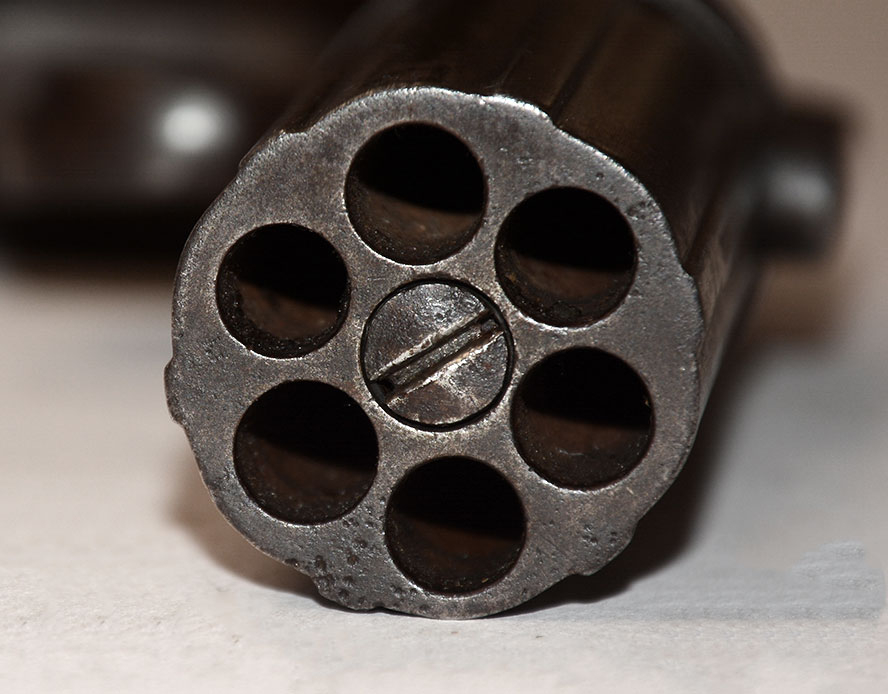
$695.00 SOLD
Quantity Available: None
Item Code: 2025-496
|
This Marston & Knox double-action percussion pepperbox pistol in is good original condition. Known by a number of trade names, this pepperbox pistol was made in New York during the 1850s and is a .31 caliber, six-shot, cap and ball specimen with an iron frame, a rotating 3.25” ribbed barrel and a bar hammer. Stamped on one of the barrel ribs is the maker’s name “W.W. MARSTON & KNOX”. In addition, the top of the hammer bears “W.W. MARSTON” while the hammer’s left side shows “NEW YORK 185[4]”. Pistol has decorative scroll engravings on the iron frame. Mechanics of the pistol are strong. Gun metal exhibits smooth aged tones. Two-piece rosewood wood grips are in very good condition. An original Marston & Knox Bar Hammer pepperbox pistol in good condition. [jet][ph:L] |
DISCLAIMER: All firearms are sold as collector's items only - we do not accept responsibility as to the shooting safety or reliability of any antique firearm. All firearms are described as accurately as possible, given the restraints of a catalog listing length. We want satisfied customers & often "under" describe the weapons. Any city or state regulations regarding owning antique firearms are the responsibility of the purchaser. All firearms are "mechanically perfect" unless noted, but again, are NOT warranted as safe to fire!
~~~~~~~~~~~~~~~~~~~~~~~~~~~~~~~~~~~
THIS ITEM, AS WITH ALL OTHER ITEMS AVAILABLE ON OUR WEB SITE,
MAY BE PURCHASED THROUGH OUR LAYAWAY PROGRAM.
CLICK HERE FOR OUR POLICIES AND TERMS.
THANK YOU!
Inquire About ORIGINAL WILLIAM W. MARSTON DOUBLE-ACTION BAR HAMMER PEPPERBOX PISTOL
Most Popular
Historical Firearms Stolen From The National Civil War Museum In Harrisburg, Pa »
Theft From Gravesite Of Gen. John Reynolds »
Selection Of Unframed Prints By Don Troiani »
Fine Condition Brass Infantry Bugle Insignia »
British Imported, Confederate Used Bayonet »
Scarce New Model 1865 Sharps Still In Percussion Near Factory New »
featured item
HISTORICAL FIREARMS STOLEN FROM THE NATIONAL CIVIL WAR MUSEUM IN HARRISBURG, PA
Please click on the photograph above to view a flyer containing information regarding a Model 1860 Henry Rifle and pair of cased presentation Colt Revolvers identified to Secretary of War Simon Cameron which were stolen from the museum on February… . Learn More »


